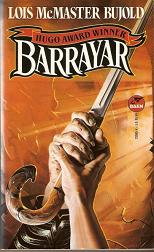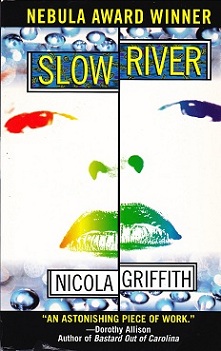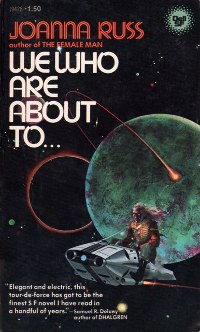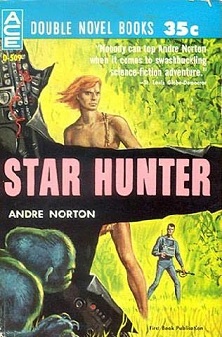
Barrayar
Lois McMaster Bujold
386 pages
published in 1991
Barrayar was actually the first ever Bujold story I ever read and I hated it. That’s because it was the last part of its serialisation in Analog that I read and I had no idea of what was going. Coming back to it now, after having read all the Miles Vorkosigan books at least once, I enjoyed it much more. Like any prequel Barrayar depends for some of its impact on the reader’s knowledge of the main series. If you don’t know who Miles Vorkosigan is and why he is the incredibly determined little mutant runt that he is when we first met him in the Warrior’s Apprentice, the details of how he got to be that way won’t matter all that much.
Chronologically, Barrayar takes place almost immediately after Shards of Honor and is the second and so far last novel to star Cordelia Vorkosigan/Ransom. Cordelia and Aral are settling in to newly married live on Barrayar, with Cordelia pregnant with Miles. Then the old emperor dies and Aral becomes regent to his young grandson and he and Cordelia are soon plunged into the dangerous, still very medieval politics of the Barrayaran court and nobility. How dangerous Cordelia only realises when they’re the victims of an assasination attempt, with poison gas grenades thrown into their house.
They survive, but the antidote Cordelia has to take to counteract the poison gas has a very bad side effect, acting as a teratogenic agent on the fetus she is carrying, posing a real risk to its bone development. Normally there would be nothing for it but to abort the fetus or risk a stillbirth, but Cordelia is not the type of woman to just give up. On a more civilised planet, where medical science was more advanced, there would be chance for the baby, as it could be put into an uterine replicator and treated outside the womb. But Barrayar doesn’t have any of them, or does it?
There are after all still the uterine replicators which housed the children born of the rape of female prisoners of war taken in Barrayar’s last war, which had been forgotten about after they served their purposes. Cordelia manages to track them down, get Miles installed in one and get a bone strengthening programme going on. It takes all her strength but she gets her way and everything looks to be on the up and then the civil war breaks out.
And Miles is behind enemy lines, in the captial, trapped with the rebels. So Cordelia decides to go and get him to safety. Which is sort of where I came in the first time I read this, in the last third of the story. No wonder I was confused.
In retrospect, Barrayar is a turning point in the Vorkosigan series. The novels before it had been cleverly written, more intelligent than they need to be light science fiction adventure stories. With Barrayar the series took a leap in quality and became more serious and slightly darker, setting the tone for later entries like Mirror Dance and Memory.
Barrayar is also another reminder of how subtle Bujold can be in showing the effects of her science fictional technology. There isn’t any of the technogeekery or infodumping of some authors I could mention, but at the same time the plot is very much driven by a classic piece of science fiction kit, the artificial womb or uterine replicator. Here it is more of a macgufin of course, something for the protagonist to chase, but over the course of the series we slowly see the impact the introduction of uterine replicators has on Barrayaran society. And here is where it started.
Barrayar is not the best of the Vorkosigan series, but it is the best of the early part of the series. Don’t read it if you haven’t read the earlier published novels yet.



